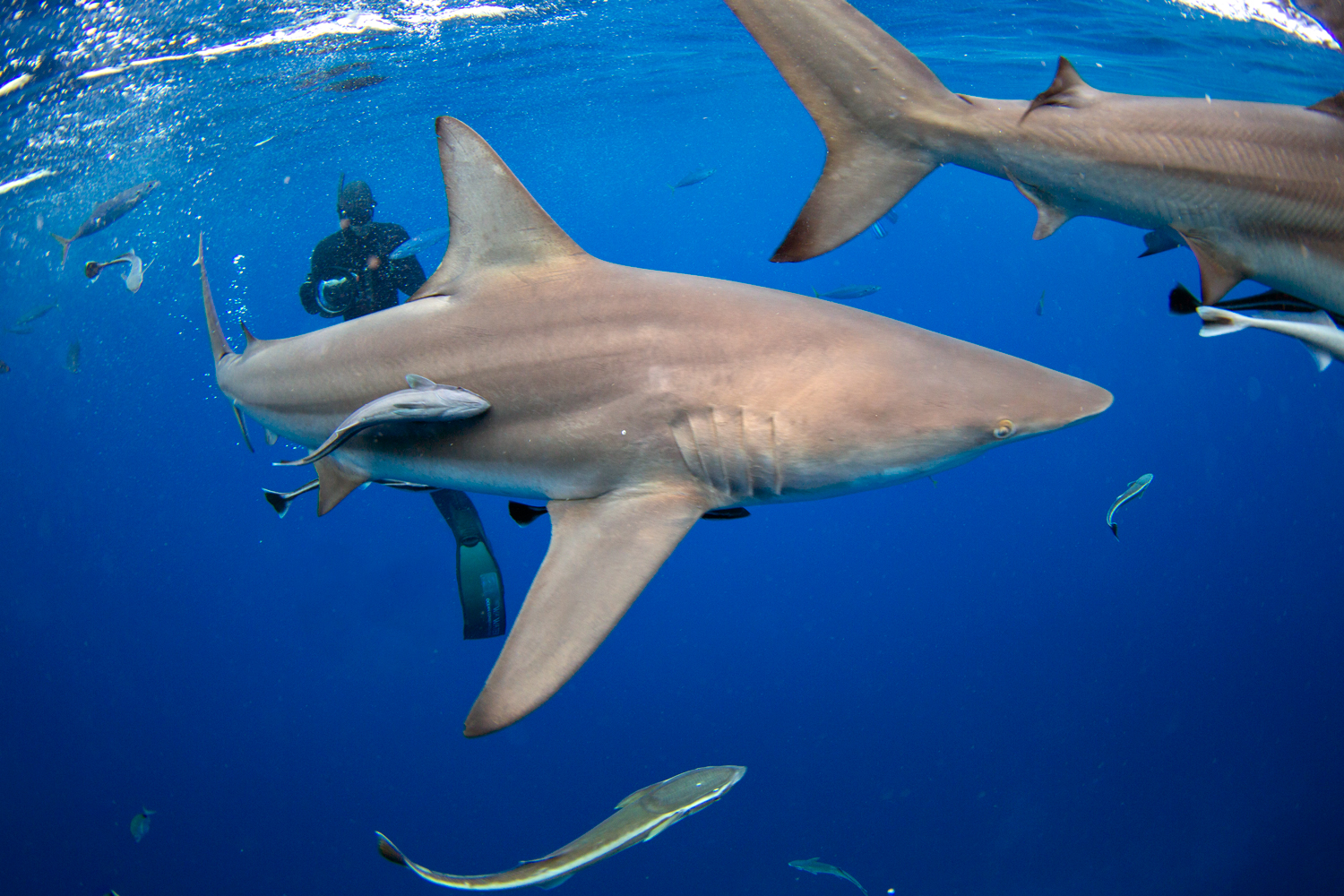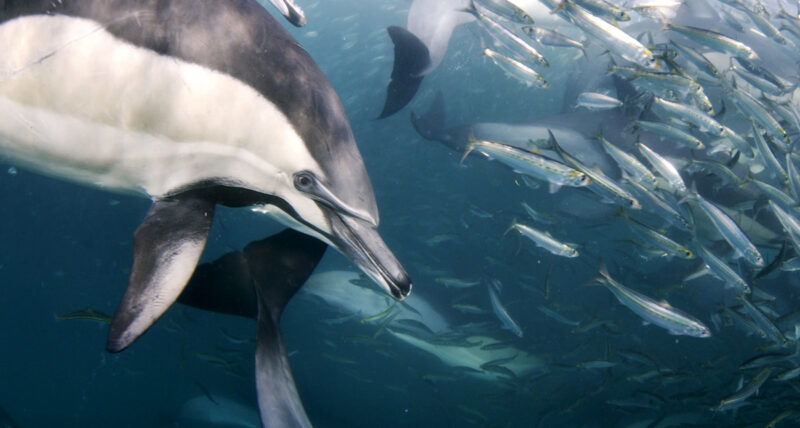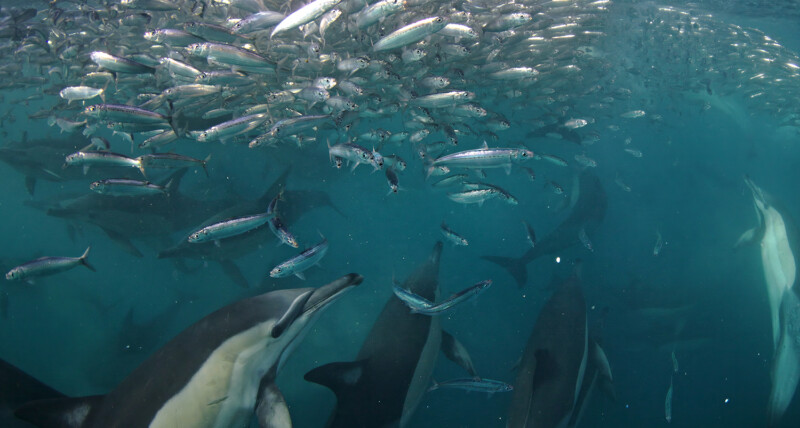Why Dive In South Africa?
Some Quick Facts
- There are over 12 000 species of marine plants and animals
- This 12 000 equals roughly 6% of all coastal marine species known worldwide
- Roughly 31% of these are endemic (occurring nowhere else in the world)
- South Africa has more than 2000 species of fishes around its coast ranging from tiny cling fishes to the massive whale shark
- There are about 100 species of sharks off Southern Africa
- Roughly 38 species of cetaceans occur in Southern Africa including everything from orcas and common dolphins to the largest animal on earth – the blue whale.
- South Africa has about 900 species of birds!
2800 Kilometers (1740 miles) Of Coast
Many South Africans who spend time abroad, are not too surprised when they encounter puzzled looks and odd replies, when answering the question – “where are you from?”
Confused looks often accompany replies like;
“South Africa? Yes but which country?”
Luckily this is not the rule and many people have a rough idea of where South Africa is and what a person might find there (although mostly land based).
But what about the oceans that surround the South African coast?
The coastline of South Africa, stretches over 1,740 miles (2,800 kilometers) and faces not one, but two awesome oceanic systems:
- a strong upwelling on the Atlantic coast caused by the Benguela upwelling system, which draws cool, nutrient-rich water from the seafloor to the surface. This system replenishes the fertility of inshore waters, filling them with phytoplankton and nourishing the entire food chain.
- a powerful current on one side of the continent, known as the Agulhas Current (the African equivalent of the Gulf Stream), continuously moving southward and shifting warm Indian Ocean water from the vicinity of Mozambique toward the southeast corner of the African continent.
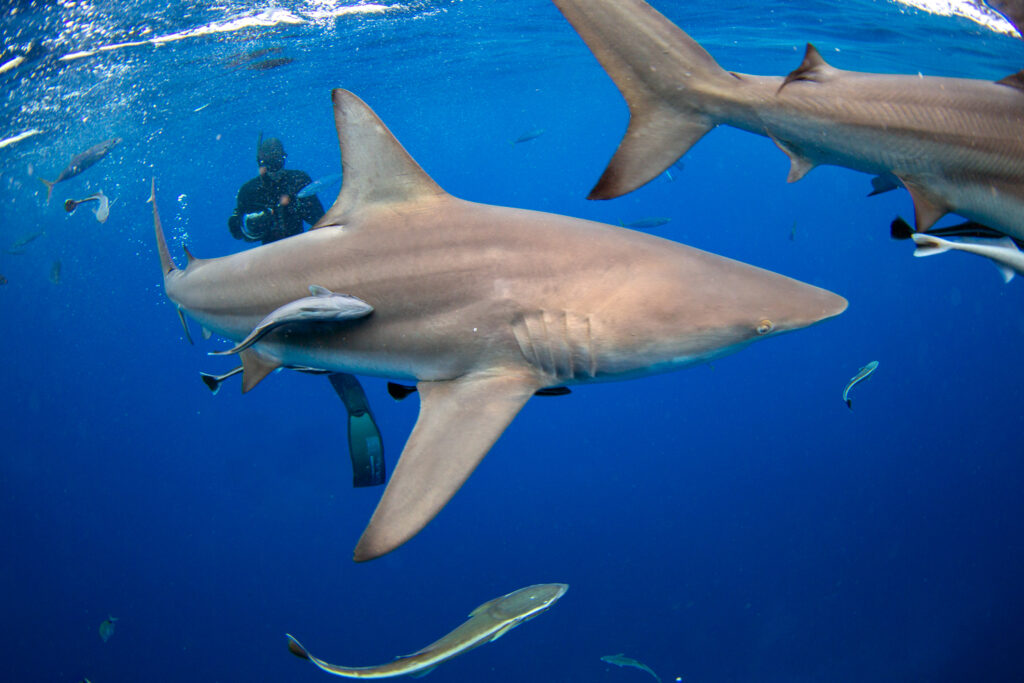
Underwater Forests Exploding With Life
The Benguela system supports some of the largest seal colonies in the world, masses of seabirds and fish species.
Kelp (like the Ecklonia maxima variety), also called sea bamboo, is the trademark of the western coast. This kelp grows up to 1.3 centimeters (0.5 inches) a day—and the fronds, pumbled constantly by wave action, produce six times their own weight in detritus each year, making the kelp ecosystem one of the most productive on Earth.
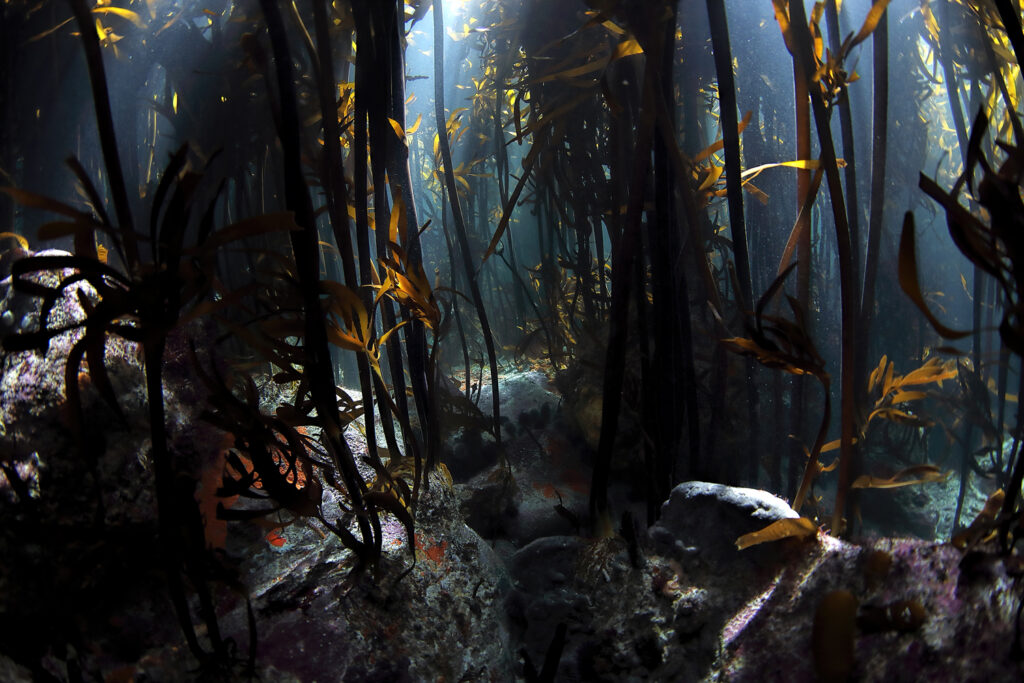
Snorkeling, Freediving or scuba diving through a kelp forest will reveal an incredibly rich and diverse assortment of life.
Starting at the surface in the lush fronds of the kelp you will find everything from fish to an occasional octopus hiding in the leafy strands. Schools of ‘strepies’ (sarpa salpa) seek shelter in the thick kelp as larger fish like the Red Roman and Steenbras navigate the corridors formed by the kelp stalks. The White Steenbras can grow up to 1 meter and weigh as much as 30kg.
Moving just a little deeper and closer to the bottom (starting in water as shallow as 2 meters) you will find a wealth of life. Rock slabs completely covered with Cape urchins in a spectrum of colours ranging from purple to orange, abalones (called perlemoen after the Dutch word for mother-of-pearl) as well as cold water coral, sponges and algae covering every surface in a rainbow of colours.
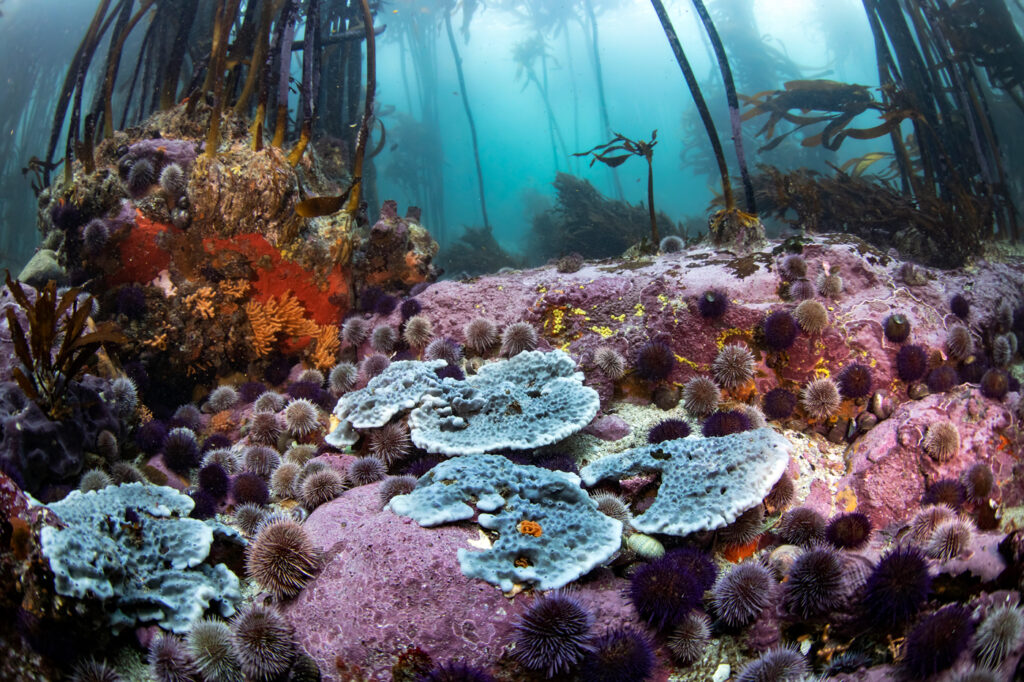
Look even closer and you will start finding a huge variety of nudibranchs of which False Bay alone has at least 67 different species! A macro photographers dream…
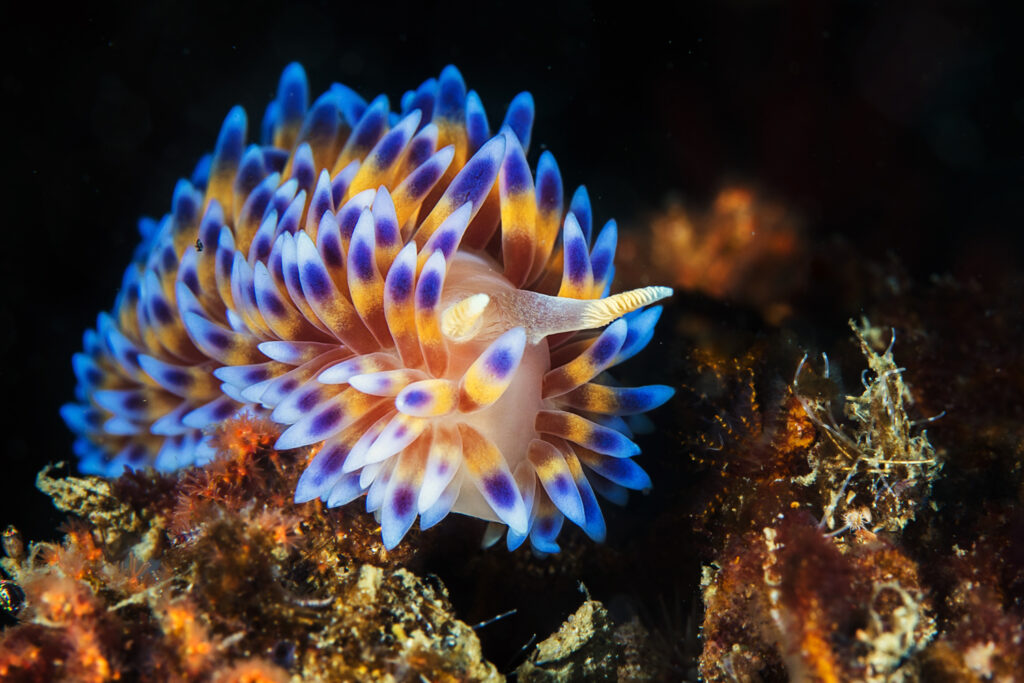
If you prefer larger marine life, then you will also not be disappointed as the kelp forests also provides shelter to everything from sharks and rays to sealions and otters.
The magic of kelp forests is that every single time you enter the same area you can expect anything to appear. Some days it might be several species of shy sharks and countless species of fish (quite standard), other days you can come across the prehistoric broadnosed Sevengill Cowshark which can grow up to 3 meters in length.
False Bay is home to 27 different species of shark, ray and chimaera (all cartilaginous fish).
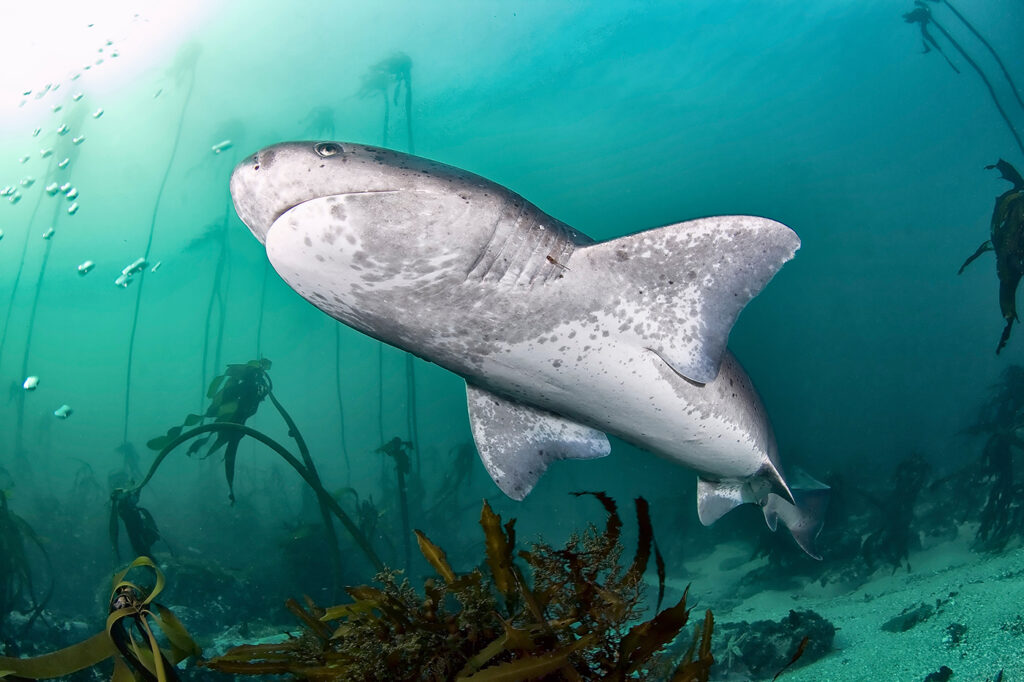
Agulhas Current Diversity
On the east coast of South Africa, diving can be compared to other warm water locations as the water can be very clear and the reefs exploding with life and colour.
Here you will find Spotted Eagle Rays, Clownfish, Batfish, Lionfish, Loggerhead turtles, Cuttlefish and Moray Eels in abundance. There is also a wide range of sharks to see in each season with the ragged-tooth shark being one of the most common species and everything from Tiger Sharks to Whale Sharks making an appearance. There are also tuna as well as barracuda which are often seen on dives along with multiple species of cetaceans.
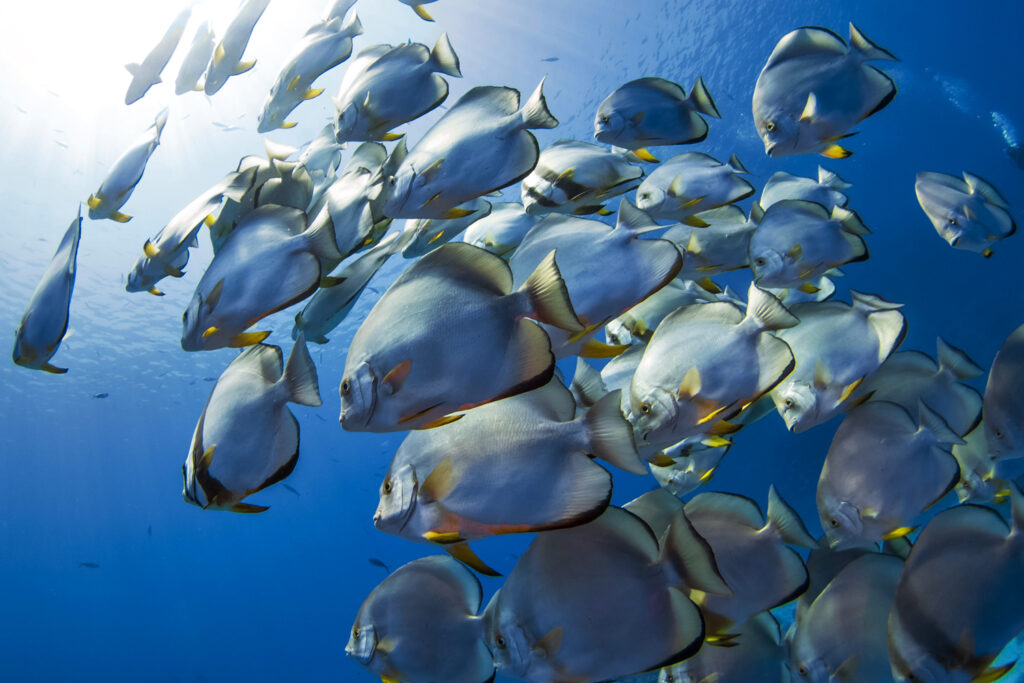
The interaction between warm and cold currents (east and west), is what makes the South African coast unique. Three other major upwellings exist in the world – off the coasts of California, Peru, and northwest Africa, but only in South Africa is the cold, productive west coast upwelling influenced by a warm, fast-flowing east coast current.
The result is an abundance of life and even a mixing of two different worlds as seen with the Sardine Run
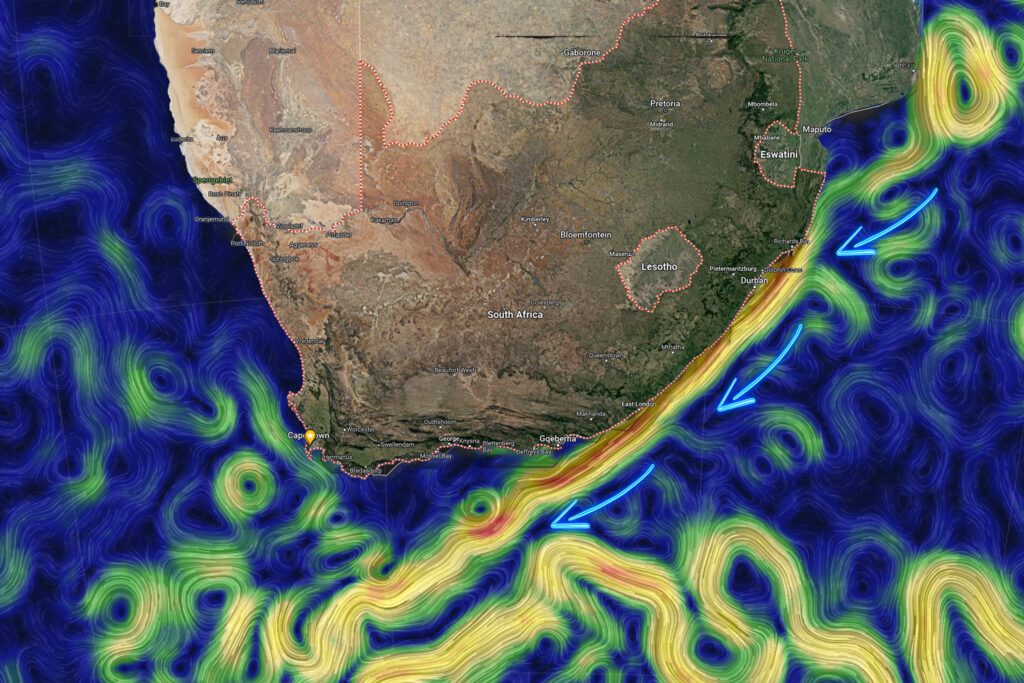
The Sardine Run - The Event That Should Not Be
Where each season thousands of dolphins, sharks, whales and Gannets devour a unfathomable quantity of sardines – the legendary Sardine Run is an indirect result of this dynamic interaction of currents and by ‘normal’ standards, sardines should not be found on the eastern coast at all. Being cold-water fish their natural grounds are the southern and western coasts. So how is the Sardine Run possible at all?
Most of the year inshore water temperatures on the east coast of South Africa are warmer than 20 degrees Celsius (68 degrees Fahrenheit) and too warm for the sardines. During the winter a combination of cooling land breezes and a mild upwelling of Agulhas Current waters onto the continental shelf creates a narrow, cool-water corridor that sardines can exploit.
Using this corridor and patches of cool water, the sardines move northward, and stream up the coast. Once they reach the area close to Durban, those that haven’t been caught or eaten spread out onto the continental shelf to feed and spawn. As the surface sea temperatures rise by the growing heat of the spring sun, the sardines descend to cooler depths, but eventually rising temperatures drive them back towards the south to rejoin the parent population off the Eastern Cape.
From the footage and images of the Sardine Run it is easy to understand how this mass gathering of life is a bucket list event for many ocean lovers. It is not uncommon for guests to return year after year as no two season are exactly the same!
South Africans Oceans - Something For Everyone
From warm water to cold water diving, large marine life to macro photography – South Africa has it all. In a place like the Cape Peninsula you can dive in two entirely different oceans (Atlantic and Indian) with two vastly different marine eco systems in a single day by simply driving 20 minutes through winelands or epic coastal landscapes.
Move further east and the water colour changes along with the types of marine life you see…
There is a reason why South Africa has long been one of the top dive destinations in the world and in a word it is ‘diversity’.
As a diving destination you simply can not go wrong.
Check out the Youtube playlist below for some videos of previous encounters.:

